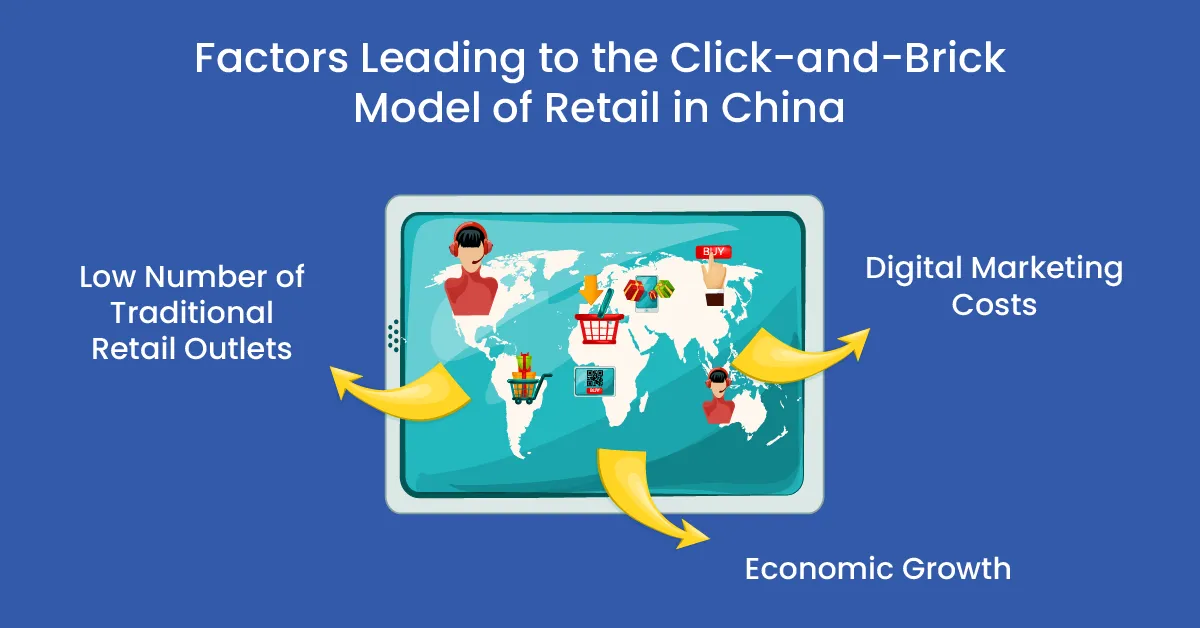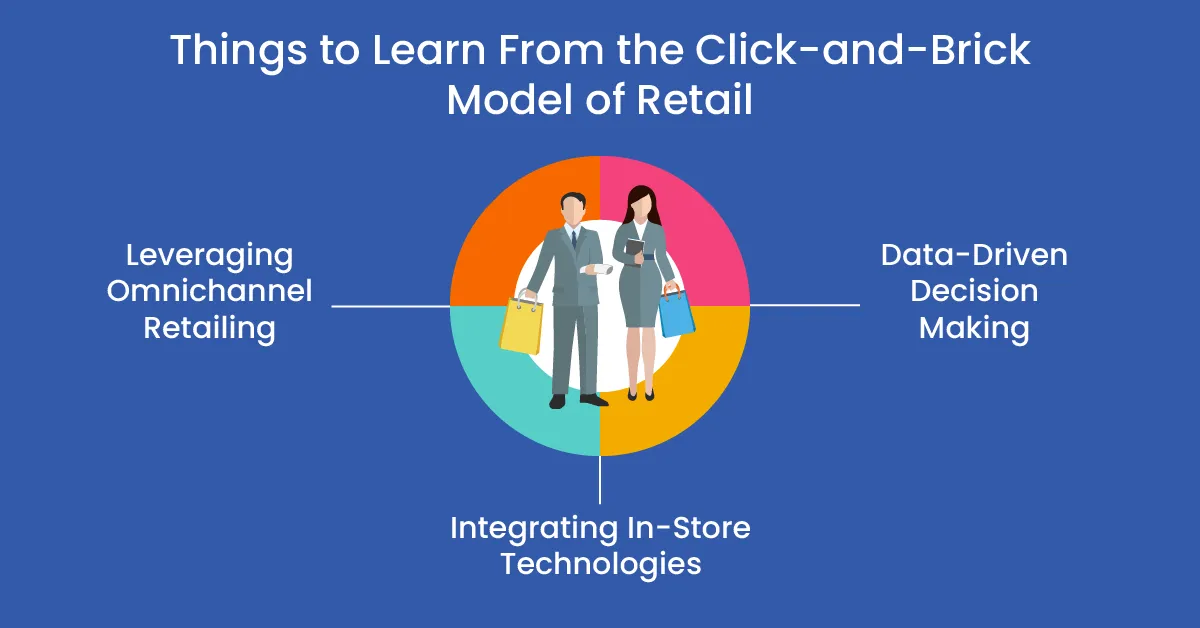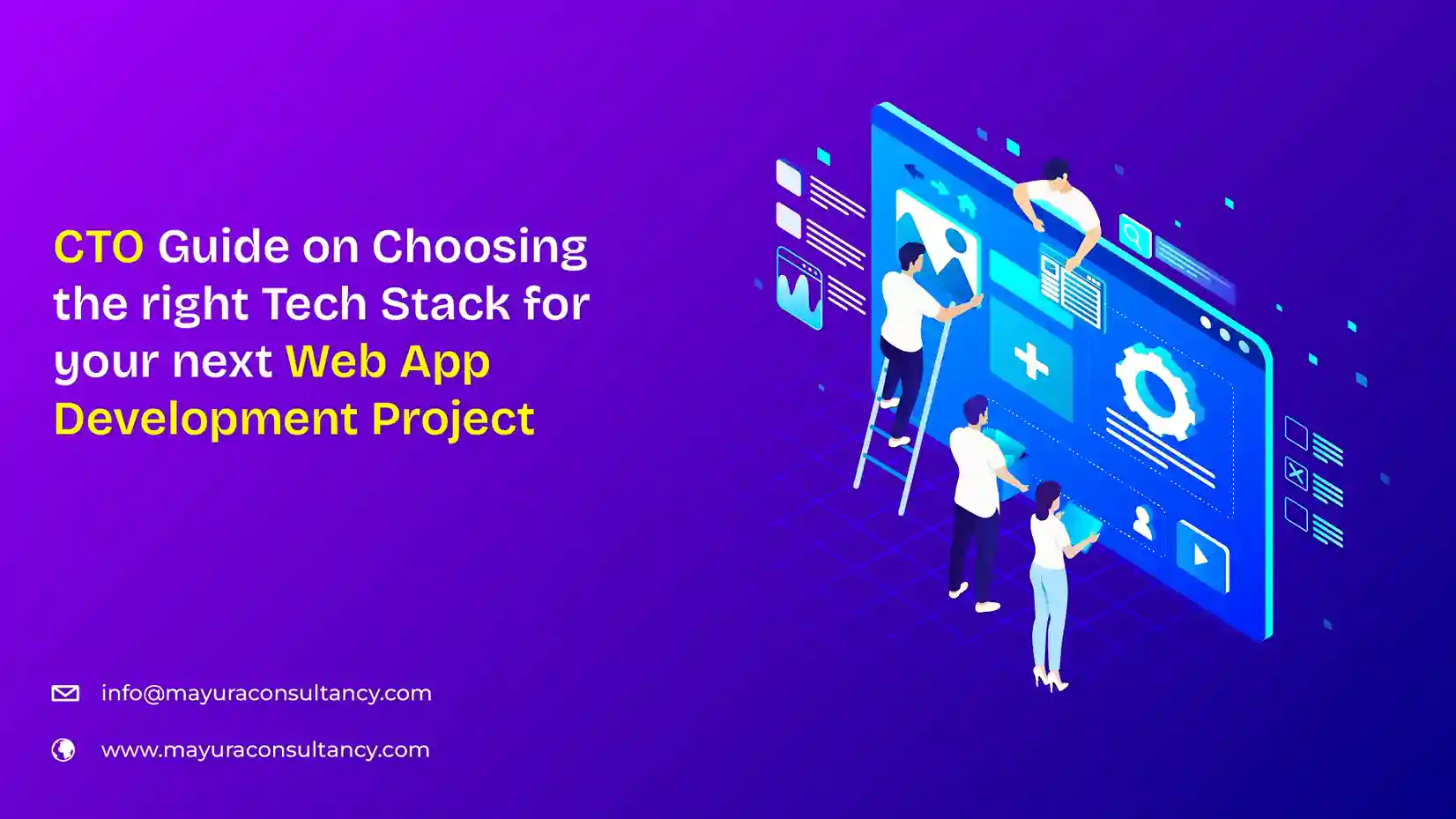Physical retail stores took a severe hit during the pandemic. However, with the easing of COVID-19 restrictions worldwide, there is a notable rise in people visiting brick-and-mortar stores. This surge presents a significant opportunity for physical store owners to improve their operations.
Chinese retailers have been quick to capitalize on this opportunity. By leveraging innovative ecommerce solutions, they have adapted swiftly to the changing landscape, enhancing the overall shopping experience. Here’s what you can learn from China’s clicks-to-bricks retail model.
This Article Contains:
Factors Leading to the Click-and-Brick Model of Retail in China
Before we jump into what we can learn from the Clicks-to-Bricks retail strategy, let’s break down the factors that are making this trend take off in China.

1. Low Number of Traditional Retail Outlets
China has a low number of traditional retail outlets per capita, especially when compared to other major economies. With fewer physical stores available, there exists an opportunity for e-commerce companies to step into the void and broaden their reach by establishing offline outlets.
This allows offline retail store owners to tap into a consumer base that still prefers in-person shopping experiences. By expanding their physical presence, these companies not only cater to the preferences of a diverse consumer market but also capitalize on the potential for increased offline sales.
2. Economic Growth
Another factor contributing to the click to brick model in China is the country's robust economic growth and the concurrent rise in mobility. As the economy expands, there is a notable surge in retail sales, fueled by increased consumer spending.
This is a favorable environment for the integration of both online and offline retail channels. The upward growth trajectory is anticipated to persist in the coming years, making it an opportunity for businesses to establish a physical presence. By aligning with the economic surge and catering to the growing mobility of consumers, companies can capitalize on the rising demand for in-person shopping experiences.
3. Digital Marketing Costs
With the rise of business digitization and growing competition, there is a surge in digital marketing costs. As e-commerce companies face escalating expenses to maintain their online visibility, achieving profitability becomes a growing challenge.
In response, these companies are turning to physical locations as a more cost-effective avenue for customer acquisition. The limited number of traditional retail outlets provides an opportunity for digitally native brands to diversify their strategies and extend their reach offline.
By establishing a physical presence, businesses not only navigate the rising costs of digital marketing but increase customer engagement.
Things to Learn From the Click-and-Brick Model of Retail
Businesses can learn several valuable lessons from China's clicks-to-bricks retail strategy to stay flexible and competitive in the evolving retail sector:

1. Leveraging Omnichannel Retailing
China's clicks-to-bricks retail model showcases a vital lesson for businesses: the benefits of omnichannel retailing. This approach seamlessly integrates online and offline channels, creating a cohesive and enhanced shopping experience for consumers.
By partnering with experienced technology partners and adopting omnichannel strategies, businesses can ensure a consistent brand presence across various platforms, meeting customers wherever they prefer to engage. Businesses can use strategies like:
Cross-Channel Inventory Management: Implementing systems that synchronize inventory across all channels, ensuring real-time updates. This helps prevent stockouts, allows for efficient order fulfillment, and provides customers with accurate product availability information.
Click and Collect (Buy Online, Pick Up In-Store): Offering customers the option to purchase items online and pick them up at a physical store. This strategy leverages both online convenience and the in-store experience.
Social Media Integration: Leveraging social media platforms as part of the omnichannel strategy enables customers to shop directly from social media channels and use these platforms for customer service and engagement.
Integrated Loyalty Programs: Integrate loyalty programs across all channels, allowing customers to earn and redeem rewards seamlessly, whether they shop online or in-store.
These strategies not only foster customer loyalty but also maximize sales opportunities.
2. Integrating In-Store Technologies
By strategically incorporating technological advancements, retailers can significantly enhance the in-store shopping experience. Features like augmented reality mirrors offer customers an interactive and immersive way to explore products, making the in-store experience more engaging.
For instance, Sephora, a leading beauty retailer, has innovatively integrated augmented reality (AR) mirrors in its stores. These AR mirrors enable customers to swiftly experiment with an array of beauty products and colors, providing a virtual experience of different looks. To enhance convenience, customers can also text themselves a list of the products needed to recreate their chosen look. Moreover, these mirrors are also capable of offering personalized recommendations with the help of AI.
This interconnected approach not only modernizes the shopping experience but also positions businesses to meet the expectations of tech-savvy consumers.
3. Data-Driven Decision Making
Retailers can gain valuable insights into shopping behaviors and preferences by systematically capturing and analyzing customer data. This information empowers businesses to make informed and personalized recommendations, creating a more tailored and relevant shopping experience.
For instance, a fashion retailer analyzing purchase history and browsing patterns may identify popular styles among a particular demographic. This can enable them to curate targeted promotions or introduce new collections that align with customer preferences.
Parting Thoughts
While the Clicks-to-Bricks retail model presents exciting opportunities, businesses must also acknowledge potential challenges associated with this transition. One major hurdle is the initial investment required for establishing and enhancing physical stores. Another challenge lies in seamlessly integrating online and offline operations to maintain consistency in customer experience. To overcome this hurdle, businesses can take the assistance of omnichannel experts.
Mayura Consultancy Services can help businesses that are facing the challenge of integrating online and offline operations seamlessly. With its expertise in omnichannel solutions, MCS ensures a consistent customer experience by offering comprehensive services, from data integration to inventory synchronization, empowering businesses to navigate the complexities and deliver a unified and enhanced shopping journey.
FAQs
1. What is the clicks-to-bricks retail model?
The clicks-to-bricks retail model refers to the strategy of online businesses establishing physical retail stores to complement their digital presence. It involves integrating online and offline channels to enhance the shopping experience.
2. What insights can businesses gain from China’s click and brick model?
Importance of creating a unified shopping experience, leveraging digital technologies to enhance the customer journey, and rethinking traditional retail strategies to stay competitive in a rapidly evolving market.
3. How has China's retail industry leveraged the clicks-to-bricks model to capture a larger share of the market?
The clicks-to-bricks approach is used by China's retail sector to seamlessly integrate online and offline channels for a full buying experience. This tactic increases consumer involvement, expands the audience, and improves the whole purchasing experience.






